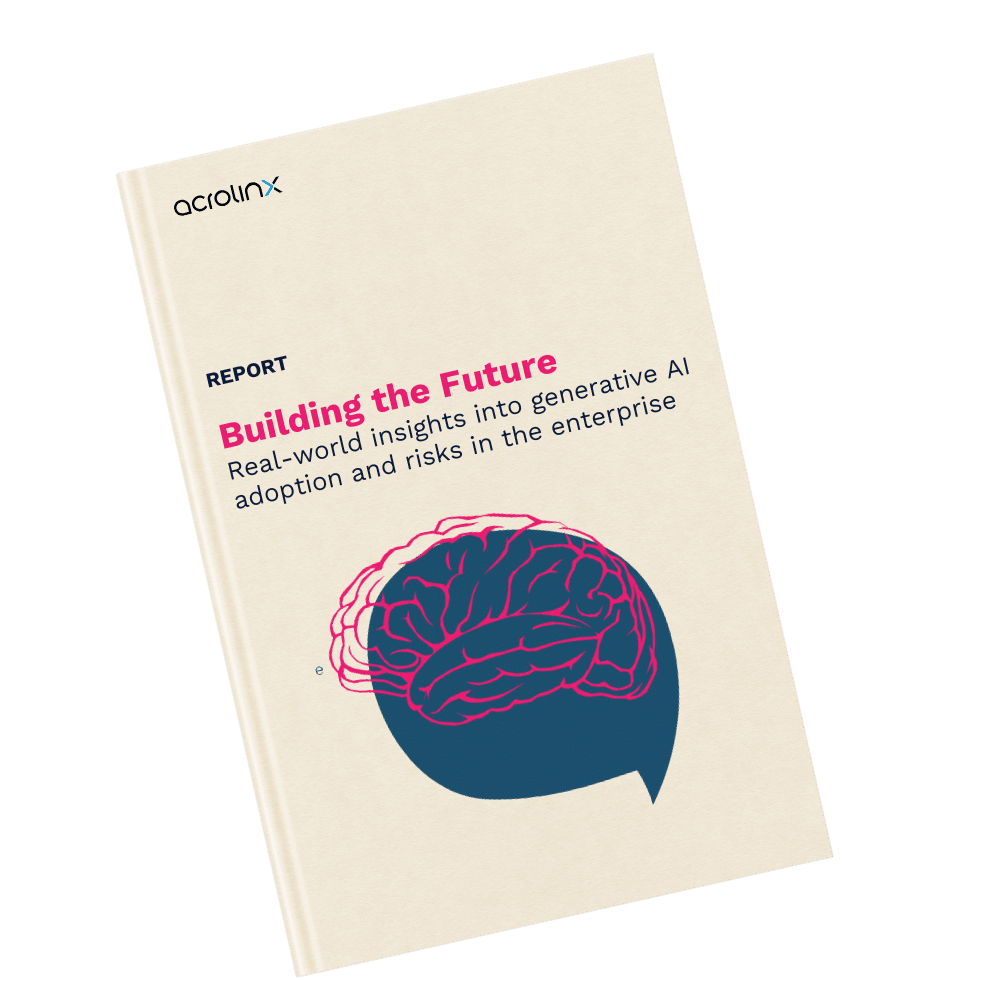
Everyone’s talking about AI in the enterprise, but how many businesses are actually using it? And if so, what types of content do they plan on building with generative AI for content creation?
As generative AI technology continues to evolve, generative AI technology is disrupting the content creation space, prompting organizations to reconsider its role in their content strategy. But with public opinions and approaches fluctuating daily, it’s essential to evaluate how enterprises are already leveraging it.
We set out to understand if enterprises are adopting generative AI for content creation and why. We also wanted to explore their concerns and perspectives on how large language models should be trained.
To gain insights, we surveyed a mix of Acrolinx Fortune 500 customers (including Amazon, HPE, Humana, Fiserv, and Intralox) and other enterprises. Our final data set included 86 responses.
Let’s explore the findings.
How commonplace is generative AI in the enterprise?
The simple answer is yes — and overwhelmingly so.
Out of 86 respondents 82 of them were either already using generative AI to create content or have plans to do so soon.

Considering that 95.3 percent of respondents have adopted or will adopt generative AI, enterprises are taking steps to substantiate all the chatter around generative AI. Compared with the 4.7 percent of respondents who aren’t using it, it’s telling how many enterprises want to embrace generative AI.
Why enterprises are using the power of generative AI for content creation
In our survey we also asked why enterprises want to adopt generative AI and what they want to achieve.
Within the responses, several themes emerged in terms of the goals enterprises hope to achieve with generative AI.
- Efficiency. Lots of answers centered around driving more efficiency, creating more content in less time, and reducing costs. Some answers emphasized achieving this through generative AI creating first drafts and using more automation.
- Improve quality. Enterprises want to use generative AI to create better content, stimulate creativity, create more summarized content, and make sure all content is more consistent.
- Technical and support content. Some answers highlighted how generative AI could create easier-to-read documentation, generate DITA content, develop “emotionally intelligent” chat responses, and generally help deflect support requests.
- Process improvement. A few answers focused on how generative AI could improve content processes. For example, making sure language translation is consistent and professional and improving content management and administration.
Needless to say, enterprise goals for generative AI content creation align to what we already know enterprises want to achieve. Greater productivity, stronger brand alignment, streamlined processes, and general compliance. As such, generative AI is perceived to help enterprises meet their current goals and is seen as a major asset for the content workflow.
If you’re interested in finding out more about what enterprises hope to achieve, download our report for access to more answers.
Key enterprise concerns about AI-powered content creation
In our survey we offered five areas of concern and asked respondents to rank them, they include:
- Public data availability and quality
- Intellectual property
- Customer security and compliance
- Privacy risk
- Bias and inaccuracy
Of the 86 respondents, 25 selected intellectual property as their biggest concern. This was followed closely by customer security compliance concerns, which received 23 votes. Comparatively, the other three answers (bias and inaccuracy, privacy risk, and public data availability and quality) received between nine to 16 votes each.
It’s worth noting that there wasn’t a large point difference between the highest and lowest result. Without a clear largest concern, it’s fair to say that all the listed concerns are part of the decision-making process for enterprises.
What AI content creation tools are enterprises using?
As enterprises embrace AI-powered content creation, they are leveraging a variety of tools to enhance efficiency, quality, and scalability. These tools help businesses streamline content workflows, automate repetitive tasks, and generate data-driven insights for improved decision-making. Here are some of the most widely used AI content creation tools in the enterprise landscape:
- Generative AI writing assistants: Enterprises use AI-driven writing tools to draft, edit, and optimize content. These tools improve productivity by generating high-quality text based on user prompts and predefined guidelines.
- AI-powered editing and optimization Tools: Ensuring content quality, readability, and SEO-friendliness is crucial for enterprises. AI-driven content optimization tools provide grammar corrections, style recommendations, and SEO insights.
- AI for translation and localization: Global enterprises require AI tools to automate translation and localization, ensuring content is accessible across different languages and cultures.
- AI content curation and research Tools: To enhance content strategy, enterprises use AI to analyze trends, generate insights, and curate relevant content.
The future of AI in enterprise content creation
Our report definitively suggests that business leaders and enterprises are embracing and adopting generative AI tools with enthusiasm. But questions remain about training data for generative AI models and AI systems in general, it’s clear that enterprises are incorporating generative AI into their content strategy.
With AI applications, the potential for increased content velocity is exponential. And with so much opportunity available, it’s easy to see why enterprises want to be early adopters of this technology.
If you want to know what types of content enterprises want to use generative AI to create, whether enterprises currently restrict the use of generative AI, and how enterprises want to train their generative AI models, make sure to download our free report. Or, if you want to learn how Acrolinx allows you to use generative AI confidently and safely click here.
Are you ready to create more content faster?
Schedule a demo to see how content governance and AI guardrails will drastically improve content quality, compliance, and efficiency.

Charlotte Baxter-Read
Lead Marketing Manager at Acrolinx, bringing over three years of experience in content creation, strategic communications, and public relations. She holds a Master’s degree from the John F. Kennedy Institute, at Freie Universität Berlin, and a Bachelor's degree from Royal Holloway, University of London. Charlotte, along with the Acrolinx Marketing Team, won a Silver Stevie Award at the 18th Annual International Business Awards® for Marketing Department of the Year. She's a passionate reader, communicator, and avid traveler in her free time.





